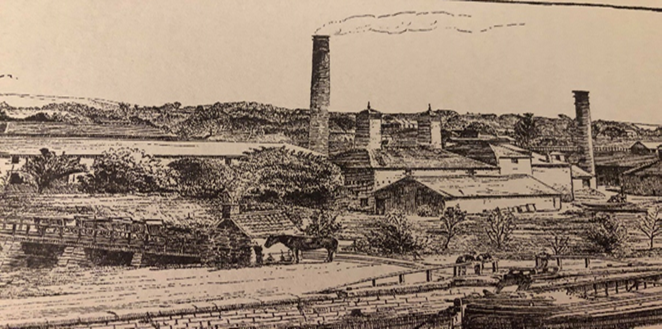This story considers how the British Empire shaped industry and peoples lives in Falkirk.
What was the British Empire?
The British Empire was a group of countries colonised and ruled over by the monarchs of the UK for hundreds of years and was one of the most pivotal developments in world history. It was vast and brought significant changes to many areas of the world. The world is the way it is today in great part because of these changes. The British had begun to establish overseas colonies by the 16th century. By 1783, Britain had overseas colonies in North America and the West Indies. This “first British Empire” came to an end after the American Revolution resulted in the USA becoming idependent of British rule. Soon after, in the 19th century, the British built a second empire, in many ways a continuation of the first, depending a great deal on sea power, to colonise India and considerable swathes of Africa (with other African countries colonised by other European powers such as Germany, France, Italy, and the Netherlands). This second empire waned in the 20th century, with many countries becoming independent after World War Two.
How big was the empire?
At its height, the British Empire was vast and covered around 25% of the world’s land surface. Areas of North America, Australia, Africa and Asia were all part of the British Empire at one time or other.
Was the empire a force for good or bad?
This question you must answer for yourself. The empire brought changes to many people and many countries. Britain, having profited from the transatlantic slave trade in the 1700s, abolished slavery in the 1800s. Although Falkirk benefitted from industrial development during the empire, these industries did well in part because of slave labour on the West Indies plantations (see our stories about the History of Sugar, the Carron Sugar Pans, William Forbes and more). For many people, the British Empire meant the loss of lands, discrimination and prejudice. There will never be an answer to this question that everyone will agree with.
How did the Falkirk area benefit from the Empire?
There were quite a few excellent benefits to the local area. The colonies needed goods that they could not or did not make themselves. Iron goods were in high demand, and the Carron Company could supply that in quantity and quality. The new trade was not all one way, there were imports (such as sugar from the plantations) as well as exports, and both could be handled by the dock at Carronshore. The dock could handle Schooners up to 200 tons and was well used by Carron company who even had its own boat building and repair facilities. In 1801, the Carronshore yard fitted the steam engine to the Charlotte Dundas. The small village of Carronshore grew in size as the need for labour increased to cover all the additional trades and small businesses that were required due to this increase in industry.
The Forth and Clyde Canal
To help increase trade at its port, the Carron company called for a canal across the centre of Scotland from Glasgow to Carronshore. It succeeded in getting the Forth and Clyde canal built in the 1770s. Still, other commercial interests decided that its Eastern terminus should be placed at Grangemouth, where the Port of Grangemouth was founded in 1777.
The new canal and port of Grangemouth attracted a lot of new trade between Grangemouth and Glasgow, which, in turn, prompted a host of new businesses to open. The increase of new business benefited many as there was now faster, cheaper transport to and from Glasgow, with dwellings along these routes. Not only goods were transported on the canal, there was also a more significant number of passenger traffic across Scotland.
Who and what benefitted?
Businesses started to flourish along the canal as the trade to and from the empire continued to grow. Some companies grew to become large and well known. From Grangemouth, at the Eastern terminus, all the way to Bonnybridge and beyond, there were companies such as the Brick and Tile Company, Acid Works, Iron Works, Sawmills, Chemical Works, Distilleries, Vitriol and Aluminium Works. You also had housing, food outlets, inns, hostels, small boatyards, lock keepers’ cottages and stables for the horses used to pull the boats on the canal.
What started with the development of the British Empire, the import and export of goods to and from Scotland, affects our lives even today. Indeed, the canal is still a part of our lives today. It has changed from an industrial hub to centre of a leisure industry. One business in particular stands out from the rest as it was the first and last chemical production company in the Port Downie area. This was James Ross and Company, more about this company can be found in our story on “James Ross and Company.”
By Ron Watson, Great Place volunteer, Hidden Heritage: Industry and Empire project 2020.

